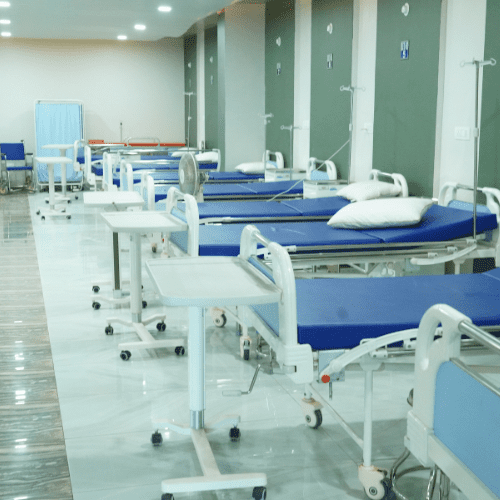The healthcare landscape in Nagaland, India, is shaped by its unique geographical challenges. Nestled in the northeastern region of the country, the state is characterized by its hilly terrains, which create significant barriers to the accessibility and quality of healthcare services. As populations in remote and isolated communities continue to grow, the strain on existing healthcare infrastructure becomes increasingly pronounced. Understanding the multifaceted challenges faced by healthcare delivery in Nagaland is essential for stakeholders aiming to develop effective strategies for improvement. This article examines the inherent difficulties of delivering healthcare in Nagaland’s mountainous regions and proposes strategic solutions for enhancing access to quality medical services.
Understanding the Unique Healthcare Delivery Challenges in Nagaland’s Hilly Terrains
The rugged topography of Nagaland is one of the primary factors contributing to the complex healthcare delivery challenges faced by the state. Many villages are situated in isolated locations, making it difficult for healthcare providers to reach these communities. The narrow, winding roads that lead to remote areas are often in disrepair, further complicating travel for both patients seeking care and medical personnel attempting to provide services. The lack of reliable transportation infrastructure not only delays access to emergency medical assistance but also discourages individuals from seeking preventive care, ultimately affecting the overall health status of the population.
In addition to transportation challenges, Nagaland suffers from a pronounced scarcity of medical personnel. The state has a limited number of trained healthcare professionals, which is exacerbated by the allure of urban centers where resources, facilities, and opportunities are perceived to be better. As a result, rural communities are often left with insufficient medical staff to meet their needs, leading to a reliance on traditional and informal healthcare practices. This lack of professional healthcare providers can hinder the delivery of essential services, such as maternal and child healthcare, immunizations, and chronic disease management, contributing to disparities in health outcomes across the region.
Seasonal weather conditions also pose a significant challenge to healthcare delivery in Nagaland’s hilly terrains. Monsoon rains can render roads impassable, isolating communities and disrupting the supply chain of essential medicines and medical supplies. Additionally, the risk of landslides during heavy rainfall can further complicate access to healthcare facilities. These climatic factors not only affect the timeliness of medical interventions but also create a sense of uncertainty and fear among the local population, who may hesitate to seek care during adverse weather conditions. Thus, the cumulative effect of geographical barriers, workforce shortages, and environmental challenges creates a challenging healthcare delivery landscape in Nagaland.
Strategic Solutions for Enhancing Healthcare Access in Nagaland’s Hilly Regions
To tackle the healthcare delivery challenges in Nagaland’s hilly terrains, a strategic and multifaceted approach is essential. One of the primary areas for intervention is the improvement of transportation infrastructure. Building and maintaining reliable roads and communication networks can significantly enhance access to healthcare facilities, enabling both patients and healthcare providers to navigate the challenging terrain with greater ease. Investments in local infrastructure would not only facilitate timely access to medical care but also foster a sense of security within the community, encouraging individuals to seek preventive and routine healthcare services.
Additionally, the integration of telemedicine and mobile health initiatives presents a viable solution for addressing the geographical barriers experienced in Nagaland. By utilizing technology, healthcare providers can remotely diagnose and treat patients, reducing the need for travel to distant healthcare facilities. Telemedicine can also facilitate health education and awareness campaigns, empowering local populations to take charge of their health. Implementing mobile health clinics that can travel to remote areas, providing basic medical services and consultations, is another innovative approach that can bridge the gap in healthcare access for underserved communities.
Finally, addressing the shortage of healthcare personnel requires concerted efforts from various stakeholders, including government agencies, educational institutions, and non-governmental organizations. Creating partnerships to establish training programs within the state can help develop a skilled workforce that is more likely to remain in rural areas. Additionally, offering incentives such as competitive salaries, housing allowances, and professional development opportunities can attract and retain healthcare professionals in Nagaland’s hilly terrains. By fostering collaboration and innovative solutions, stakeholders can work towards enhancing healthcare delivery and improving health outcomes for the population in this unique geographic region.
In conclusion, the challenges of healthcare delivery in Nagaland’s hilly terrains are multi-faceted and deeply rooted in the region’s geographical, infrastructural, and socio-economic context. Addressing these challenges requires a comprehensive approach that encompasses not only physical infrastructure improvements but also innovative healthcare models and community engagement. By leveraging technology and fostering collaboration among various stakeholders, it is possible to enhance access to quality healthcare services for the diverse and vibrant population of Nagaland. As efforts to improve healthcare delivery continue, there is hope for better health outcomes and an overall increase in the quality of life for the residents of this resilient state.




